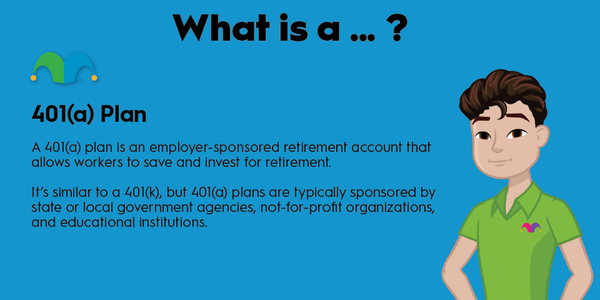A 501(c)(3) organization is an organization created to comply with and benefit from Section 501(c)(3) of the Internal Revenue Code. Although they're more commonly referred to as charities, 501(c)(3) organizations come in all shapes and sizes and work for different purposes. Read on to find out more about 501(c)(3)s -- the types, how to establish one, and the advantages and disadvantages of exempt organizations.

Definition
What is a 501(c)(3)?
A 501(c)(3) is commonly referred to as a charity; it doesn't need to pay taxes on contributions it receives, and its donors can generally make tax-deductible contributions. Examples of 501(c)(3) organizations include churches, professional organizations, research organizations, educational entities, and welfare agencies. Some of the larger 501(c)(3) organizations in the United States include the New York Public Library, St. Jude Children's Research Hospital, the Nature Conservancy, and Catholic Charities USA.
Because they're exempt from paying taxes, the nonprofits have several limitations on their activities. A 501(c)(3) can't participate fully in political processes, can engage in only very limited lobbying, is required to pay taxes on unrelated business income, cannot excessively benefit private interests, including board members and employees, and has to file annual reports with the IRS while making them available to the public.
It's worth noting that not all nonprofit organizations are 501(c)(3) entities. An increasingly common type of nonprofit is organized as 501(c)(4), described as a "social welfare organization" that's allowed far more leeway in political involvement. Chambers of commerce and real estate boards are created as 501(c)(6) entities and teachers' retirement fund associations are organized as 501(c)(11) nonprofits.
Types
Types of 501(c)(3)s
There are three basic types of 501(c)(3) organizations:
- Public charities are the most common and recognizable form of 501(c)(3), usually including churches, educational organizations, and animal welfare agencies, among others. These 501(c)(3) organizations have to get at least one-third of their support from a broad base of public support. Individual donors can generally deduct 60% of income in contributions; corporate donations are limited to 10%. In addition, public charities have to be governed by largely independent and unrelated individuals.
- Private foundations can receive their revenue from a small number of donors. Instead of having active programs, they usually support the work of public charities with grants. Individual donations can be tax-deductible for as much as 30% of a donor's income, and governance requirements are much looser; many private foundations are wholly organized and operated by families.
- Private operating foundations are less common than public charities or private foundations. They can be considered a hybrid of the two, although most of their earnings must still be spent on active programs. Individuals can only deduct 50% of their adjusted gross income.
How to establish
Establishing a 501(c)(3)
It shouldn't come as a surprise that creating a 501(c)(3) involves a fair amount of paperwork. Establishing a nonprofit under the section involves seven basic steps:
- Write a brief (no more than 50-words) mission statement. The statement should classify the organization, offer an overview of its purpose, and provide context that separates it from other similar nonprofits.
- Provide a name for your organization. The name should be unique. Check the U.S. Patent and Trademark Office database to ensure it's not taken. You should also check your state's database and ensure that useful domain and/or social media names are available.
- Create a board of directors. The IRS generally prefers nonprofits to have between three and five directors. Determining the skills your organization lacks and appointing directors with those skills is generally a wise approach.
- Draft bylaws. The IRS and your state regulators will review your bylaws, so it's often advisable to hire an attorney who's familiar with nonprofit work to make sure they'll pass muster. Although most bylaw provisions are standard, some states have unique requirements for nonprofit organization bylaws.
- Incorporate your organization. Establishing your nonprofit as a corporation offers you protection from legal liability in most cases. This is done on a state-by-state basis. Most states will charge a fee for filing articles of incorporation. You'll also need to apply to the IRS for an employer identification number (EIN); you can do this on the IRS website.
- Apply for 501(c)(3) status. Depending on the size of your nonprofit, you'll need to file either an IRS Form 1023 or 1023-EZ. The 1023-EZ form can be used if your organization has three years of gross receipts less than $50,000 and assets less than $250,000; the charge is $275, due at filing. Other organizations will need to fill out IRS Form 1023 and pay a $600 submission fee. The forms can be filled out electronically at www.pay.gov. Because the forms can be complex, it's recommended that you retain an attorney to help.
- File state paperwork. Many states will rubber-stamp your application for your nonprofit application if the IRS approves it. Other states, however, will require more detailed information before you can begin soliciting donations.
Related investing topics
Advantages and disadvantages
Advantages and disadvantages of a 501(c)(3)
There are pros and cons to establishing an organization as a 501(c)(3) entity. Advantages include:
- Tax deductions. The organizations are exempt from paying corporate income taxes, and most contributions from donors are tax-deductible.
- Grant eligibility. Many donors -- especially large corporations and private foundations -- will only give money to nonprofits organized as 501(c)(3) organizations.
- Structure. A nonprofit is a legal entity that exists separately from its founder or founders, and its mission is placed above the interests of individual directors or officials.
- Liability. Since it's a corporation, people associated with 501(c)(3) organizations are generally shielded from personal liability for the organization's debts.
- Postal rates. Nonprofits can receive lower postal rates for third-class bulk mailings through the U.S. Postal Service.
- Lobbying. Although they're restricted in their ability to influence policy through the political process, 501(c)(3) organizations are given limited ability to lobby on policy issues.
Disadvantages of 501(c)(3) organizations include:
- Costs. Organizing a 501(c)(3) requires time, effort, and money.
- Paperwork. Detailed records must be kept to ensure that a 501(c)(3) keeps its nonprofit status.
- Control. Personal control of a 501(c)(3) is extremely limited for individuals.
- Public scrutiny. A 501(c)(3) is required to make its state and federal filings available to any member of the public.








